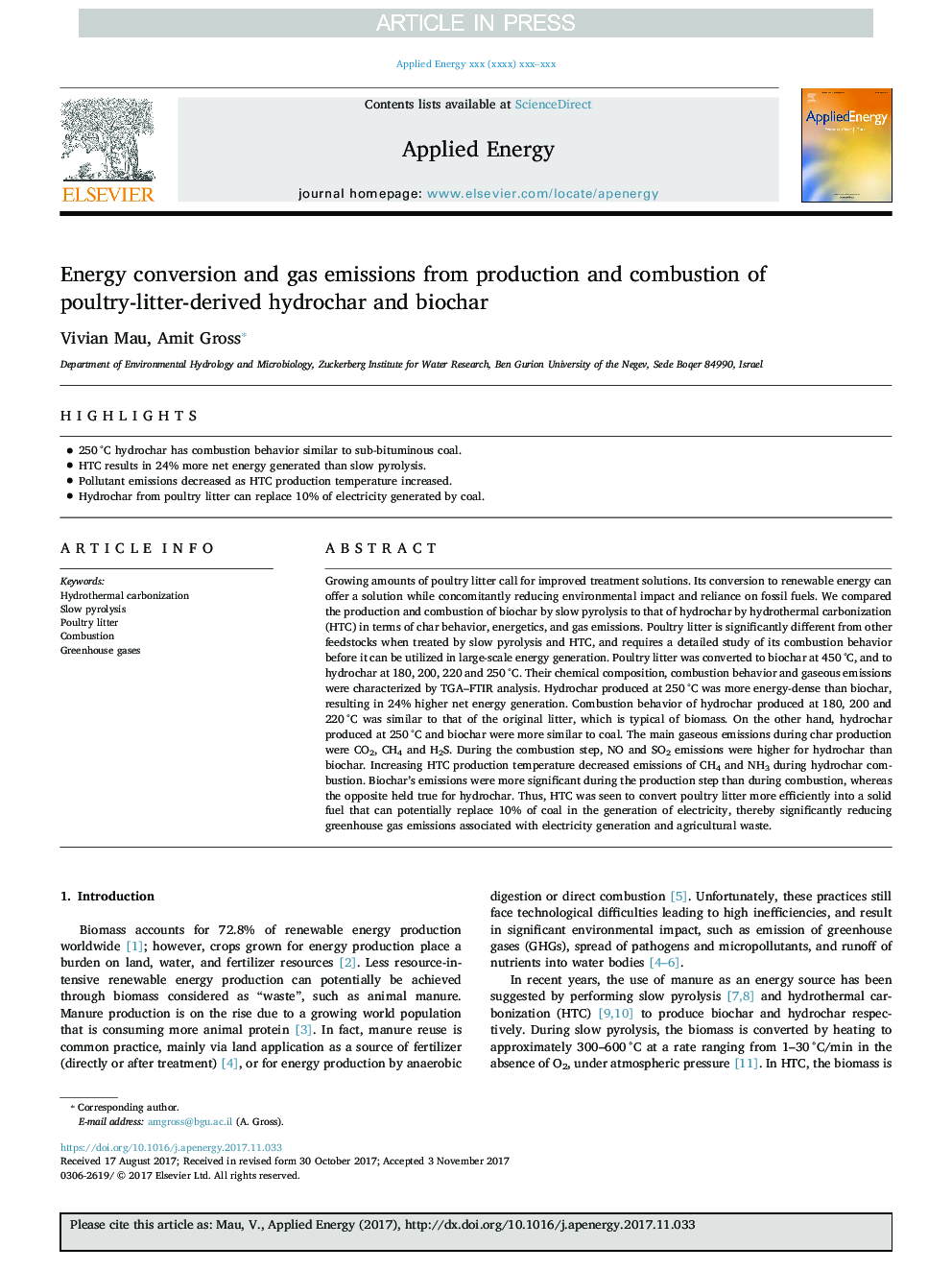| کد مقاله | کد نشریه | سال انتشار | مقاله انگلیسی | نسخه تمام متن |
|---|---|---|---|---|
| 6680837 | 1428077 | 2018 | 10 صفحه PDF | دانلود رایگان |
عنوان انگلیسی مقاله ISI
Energy conversion and gas emissions from production and combustion of poultry-litter-derived hydrochar and biochar
ترجمه فارسی عنوان
تبدیل انرژی و انتشار گاز از تولید و احتراق هیدروکارد مشتق شده از مرغ و زیتون
دانلود مقاله + سفارش ترجمه
دانلود مقاله ISI انگلیسی
رایگان برای ایرانیان
کلمات کلیدی
کربن سازی هیدروترمال پیرولیز آهسته، بستر طیور، احتراق گازهای گلخانه ای،
موضوعات مرتبط
مهندسی و علوم پایه
مهندسی انرژی
مهندسی انرژی و فناوری های برق
چکیده انگلیسی
Growing amounts of poultry litter call for improved treatment solutions. Its conversion to renewable energy can offer a solution while concomitantly reducing environmental impact and reliance on fossil fuels. We compared the production and combustion of biochar by slow pyrolysis to that of hydrochar by hydrothermal carbonization (HTC) in terms of char behavior, energetics, and gas emissions. Poultry litter is significantly different from other feedstocks when treated by slow pyrolysis and HTC, and requires a detailed study of its combustion behavior before it can be utilized in large-scale energy generation. Poultry litter was converted to biochar at 450â¯Â°C, and to hydrochar at 180, 200, 220 and 250â¯Â°C. Their chemical composition, combustion behavior and gaseous emissions were characterized by TGA-FTIR analysis. Hydrochar produced at 250â¯Â°C was more energy-dense than biochar, resulting in 24% higher net energy generation. Combustion behavior of hydrochar produced at 180, 200 and 220â¯Â°C was similar to that of the original litter, which is typical of biomass. On the other hand, hydrochar produced at 250â¯Â°C and biochar were more similar to coal. The main gaseous emissions during char production were CO2, CH4 and H2S. During the combustion step, NO and SO2 emissions were higher for hydrochar than biochar. Increasing HTC production temperature decreased emissions of CH4 and NH3 during hydrochar combustion. Biochar's emissions were more significant during the production step than during combustion, whereas the opposite held true for hydrochar. Thus, HTC was seen to convert poultry litter more efficiently into a solid fuel that can potentially replace 10% of coal in the generation of electricity, thereby significantly reducing greenhouse gas emissions associated with electricity generation and agricultural waste.
ناشر
Database: Elsevier - ScienceDirect (ساینس دایرکت)
Journal: Applied Energy - Volume 213, 1 March 2018, Pages 510-519
Journal: Applied Energy - Volume 213, 1 March 2018, Pages 510-519
نویسندگان
Vivian Mau, Amit Gross,
